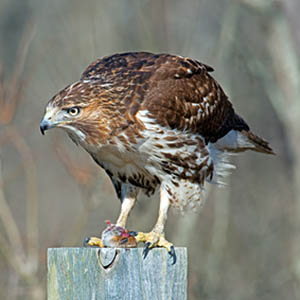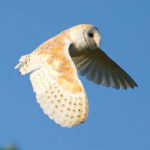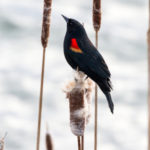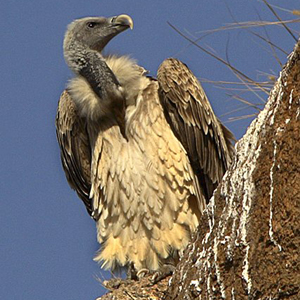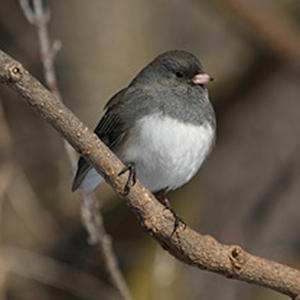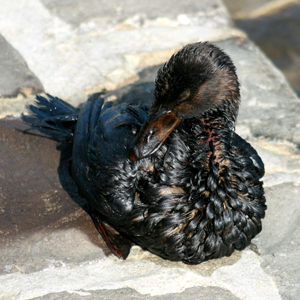Introduction
The Director of Cornell University’s Lab of Ornithology has called on us to recognize birds’ power – “as the most captivating window we have on nature, as heartbeats of the earth’s annual cycle and as global indicators of biodiversity” in 2018 the Year of the Bird. (Fitzpatrick, J., Living Bird: Cornell Lab of Ornithology, Winter 2018)
We of RCLA join with the 50 organizations in celebrating 2018 as the “Year of the Bird,” with a goal of engaging and inspiring people around the world to commit to protecting birds today and for the next 100 years. (Fitzgerald, Living Bird,) Why 100 years? An international agreement intended to protect Native American birds – the Migratory Bird Treaty Act (MBTA), was ratified by the US in 1918, 100 years ago. (More about this later)
Our organization’s focus on birds reflects Rachel Carson’s life-long interest in them. By writing Silent Spring her landmark legacy book she expressed her commitment to protecting them.
Astonishing information on how birds favorably impact our human society and the environment is emerging from a newly-named field of scientific study — avian ecosystem services (birds performing useful work for us while existing in natural ecosystems).
Birds have been found to: reduce pest species in our fields and neighborhoods, extend forest areas, disperse seeds for wetland vegetation, redistribute nutrients, prevent serious disease, communicate with us and help warn us of dangers. Birds have earned our gratitude and the right to our protection, including the preservation of the natural places where birds can thrive and render their valuable services.
Below are several specific examples of avian ecosystem services and two cases showing adverse impacts on human residents where services were significantly reduced. There is a personal account of nuisance insect control by birds (and other wildlife). And lastly, a look at recent reversals of legal protections for birds, that cry out for greater citizen awareness and action.
A Historic Perspective
Before the 1893 science-based US study of the stomach contents of over 2,000 hawks and owls found that they ate mostly pest rodents and insects, these birds of prey were considered enemies of the farmer, and encouraged to be routinely killed for bounties. After news of the study spread around the country there was recognition that hawks and owls by feeding chiefly on rodents were performing a valuable service for farmers and others. This awareness led certain localities to repeal bounties for killing birds of prey and to institute legal protection for hawks and owls. (Sekercioglu, Wenny, & Whelan). For some time thereafter, birds’ usefulness to farmers was generally acknowledged. However, from the 1940s through the 1960s birds suffered a setback that coincided with the rise of the synthetic organic pesticides (DDT and others). During that period, studies examining birds’ activity in relation to agriculture emphasized their potential roles as pests rather than as agents of pest control. (Sekercioglu, Wenny, & Whelan).
In 1918 the Migratory Bird Treaty Act, an international agreement became law in the US making it illegal for citizens “to pursue, hunt, take, capture, kill or sell most species of North American native birds.” (Fitzpatrick, J., Living Bird: Cornell Lab or Ornithology, Winter 2018). More about this later.
Services By Bird Species
Owls
Today when rodent controls fail because rats and mice have developed resistance to warfarin-type rodenticides, and/or when farmers seek to avoid using other more dangerous poisons against rodent pests, owls can emerge as the rodent killer of choice. In 2007 an Israeli biologist introduced Barn owls to Jordanian date farmers as a natural way of controlling rats in their orchards that had been found to be very effective and less hazardous than chemical rodenticides. (Winograd, Ben, “Barn owls unite Israelis, Jordanians,” AP, 7-16-07)
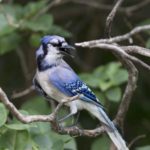 Blue Jays
Blue Jays
Through their natural feeding activities, one of the most common bird species, Blue jays, have performed a useful service. How?
Jays and certain other Corvidae have been linked to the migration and expansion of trees and forested areas. Blue jays feed on nuts. During late summer and fall they harvest tree nuts and, in a behavior known as scatter hoarding, bury them individually in the ground intending to retrieve these nuts later in the year. As the result of Blue jay scatter hoarding, oak woodlands can develop slowly in burned out areas, meadows, and former agricultural lands. This is because Blue jays travel far greater distances between nut-bearing trees and the nut caches they bury than do squirrels. For thousands of years these birds have significantly impacted the distribution and population structure of nut trees in the US (oaks, chestnuts and beeches) (Sekercioglu, Wenny, & Whelan).
Note: Native oak trees are most important for birds since they can host over 500 species of caterpillars, the preferred food for many baby song birds and are absolutely essential for Carolina chickadee babies. (Darke & Tallamy)
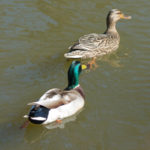 Mallard Ducks (and other dabbling ducks)
Mallard Ducks (and other dabbling ducks)
Mallard Ducks are estimated to disperse thousands of plant species through eating the seeds and passing them through the gut. In many cases this transmission also seems to enhance germination of the seeds. Most of the seeds are for land-based plants growing on wet or marshy areas. (Sekercioglu, Wenny, & Whelan)
Red-winged Blackbirds have been found to cause less than 1% of the crop damage to corn crops, however, these blackbirds eat substantial amounts of insect pests of corn that otherwise would do considerably more crop damage than that attributed to the blackbirds. (Sekercioglu, Wenny, & Whelan). They often eat insects on the wing.
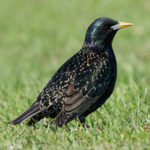 European Starlings
European Starlings
In 1939 Rachel Carson described the ecosystem services performed by a much maligned species in her article, “How About Citizenship Papers For The Starling?”
She pointed out that on one hand “the starling probably has fewer friends than almost any other creature that wears feathers…”while on the other hand the United States Department of Agriculture (USDA) considered the starling one of the most effective bird enemies of terrestrial insect pests on farms in the northeastern states, claiming further that “the starling is economically the superior of the robin, the catbird, the red-winged blackbird, the grackle, the cowbird or the English sparrow.” (Carson, R., “How About Citizenship Papers For The Starling?” Nature Magazine, June-July, 1939). At the time of Carson’s writing, flocks of starlings spent daylight hours feeding in farm fields surrounding Washington, DC. At night, especially during the cold months, they congregated on building ledges in the city, littering their roosting areas with droppings and making shrill, grating, incessant sounds. Carson considered that this nighttime behavior by starlings while distressing to city dwellers needed to be weighed against the birds’ beneficial daytime activities as agricultural insect pest controllers.
Note: This article was published in 1939 several years before the widespread agricultural use of insecticides such as DDT.
When Avian Ecosystem Services End Suddenly
Vultures in India
Vultures in India perform a useful scavenger service by feeding on bovine carcasses. Starting in the late 1970s a large number of these scavenger birds began to be killed off after feeding on cows treated with a veterinary drug, diclofenac, that turned out to be harmful to vultures. As a result of the vulture decline, the number of stray dog packs increased due to more abundant carrion for them to feed on, and the number of cases of rabies in Indian citizens also went up, because those dogs were not vaccinated against rabies. Through ridding the environment of carrion, vultures indirectly help limit the spread of disease organisms carried by competing species such as rodents and feral dogs that could vector diseases to humans. In response to the catastrophic decline of avian scavengers, veterinary use of diclofenac in domestic livestock was banned in India, Pakistan and Nepal in 2006. (Sekercioglu, Wenny, & Whelan)
Small Perching Birds in China
In 1958 China, a serious misjudgment by the central government proved costly to people and birds. Officials, alarmed about losses of grain allegedly due to sparrows, declared any small perching bird to be among China’s major scourges, and urged the killing of them by citizens. That year in Beijing alone, eight hundred thousand birds were killed. When as a consequence of this, major outbreaks of insect pests occurred, the misjudgment was recognized by the authorities, and the sparrow and other small birds were removed from the list of scourges. Further, the killing of insect-eating birds was banned by the government. (Baskin, Y., The Work of Nature: How the Diversity of Life Sustains Us, 1998)
What Avian Ecosystem Services Can Mean for People Here and Abroad
Today we know that worldwide some 5,706 terrestrial bird species consume invertebrates, including insects. (Sekercioglu, Wenny, & Whelan, p,53). Most adult grain-eating birds require a diet of insects as babies. Thus, during wild bird breeding periods especially, there are significant reductions of insects due to the work of terrestrial, migratory birds (cardinals, jays, nuthatches, warblers, robins, and wrens to name a few). This can reduce the potential insect damage to crops and ornamental plants, as well as lowering the spread of disease by biting insects.
Neighborly Avian Ecosystem Services
A Maryland gardener wrote: “My neighbor commented that since we moved next door they have been able to enjoy their dinner on the patio throughout the summer serenaded by bird song AND without being bothered by insects…My concern is, will I have enough insects to feed the wonderful diversity of wildlife that I’ve encouraged to call my garden home.”
Note: To this gardener, the insect population provided food for birds, as well as toads, bats and fish in the pond, all of which contributed to the enjoyment of hours spent outdoors in a pest-free environment due to the natural, non-toxic insect control services in her garden. (She, of course did not apply chemical insecticides to the grounds around her home.)
More About Our Birds and Protecting Them
Birds delight us with their beauty, their songs, and with the wonderment surrounding their migrations. Birds’ remarkable adaptations as sentient beings to challenging living conditions as well as their aesthetic appeal are among the reasons that these creatures have been held in high regard by humans throughout history. The Dark-eyed junco foraging on the ground during our cold months could have spent summers in the Boreal Forest of Canada where it breeds. Unfortunately, these forests now face development pressures to expand the logging and the tar sands mining footprint there, actions potentially threatening to habitats of migratory birds such as juncos, loons, owls and warblers. We in the US can help save trees in the Boreal and other forests by purchasing only 100% recycled paper wherever it is available. (All About Birds, Summer 2015)
Action is needed in 2018 to counteract the current US administration’s attempts to reduce the extent of our public lands that had been protected up to now from commercial logging, mining, and from oil and gas drilling by the policies of previous administrations. Relaxing protective restrictions can harm birds by shrinking their wild habitats and potentially exposing them to contamination – oil spills, oil waste pits, mine waste and other threats. Further, in December 2017 the Trump Administration’s Interior Department decided to “no longer prosecute oil and gas, wind and solar operators that accidentally kill birds.” This action rolled back an existing policy that had been aimed at protecting migratory birds under the 1918 Migratory Bird Treaty Act (MBTA). (Eilperin, J., “Trump administration eases Obama-era rule against killing migratory birds,” Wash Post, 12-27-17). Ex-Interior officials (from both Republican and Democratic presidencies) objected to the Trump administration’s removal of the protection for migratory birds that had been in place under this 100 year-old international law (the MBTA). In their letter to the Trump administration these former officials also described how the MBTA had been used to successfully convince oil producers to cover exposed crude oil waste pits with nets, thereby protecting migratory birds from landing on the surface and becoming covered with life-threatening toxic material. (Grandoni, D, J. Eilperin, J., “Ex-Interior officials protest move to ease bird-killing restrictions, Wash Post, 1-15-18)
2018: Year of the Bird and Centennial of the Migratory Bird Treaty Act
The current administration’s recent removal of migratory birds’ prior legal protections under the 1918 MBTA comes during this landmark law’s centennial year. More than 50 organizations have joined in a celebration of 2018 as the “Year of the Bird.” The goal of this effort “is to engage and inspire people around the world to commit to protecting birds today and for the next 100 years.” (Fitzpatrick, J., Living Bird: Cornell Lab or Ornithology, Winter 2018)
An important step we all can take is to become more aware of birds living all around us during every month of the year. Watching and listening to birds is a healthy pastime in this Year of the Bird. “With birds all over the world facing unprecedented threats to their existence, they need our attention and help now more than ever.” (Fitzpatrick, J., Living Bird: Cornell Lab or Ornithology, Winter 2018)
Here is an interesting fun-fact: The costs of conservation measures that could help to assure the preservation of bird diversity and future delivery of ecosystem services worldwide have been estimated at less than 20% of the annual global consumer spending on soft drinks, or $80 billion (Sekercioglu, Wenny, & Whelan).
We who value the company of birds need to lead the way toward assuring safe avian habitats for the benefit of future generations—avian as well as human.
Diana Post & Munro Meyersburg (February 2018)
References:
Darke, R. & D. Tallamy, The Living Landscape, 2014
Fitzpatrick, J.W., “2018 is the Year of the Bird,” Living Bird: Cornell Lab of Ornithology, Winter 2018
Sekercioglu, Wenny, & Whelan, Why Birds Matter: Avian Ecological Function and Ecosystem Services, 2016

